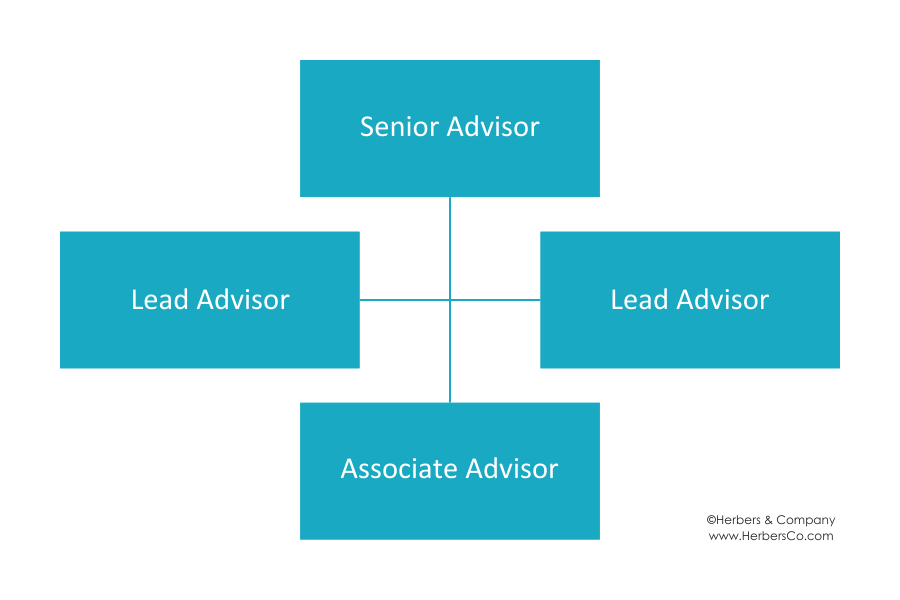

Insights > financial advisor teamsThe Four Most Effective Organizational Strategies to Build Financial Advisory Teams
By Angie Herbers, Founder & Managing Partner
Our consulting team frequently receives inquiries about the most effective team structures for growing advisory firms. The answer is not straightforward, as it largely depends on the specific goals, objectives, and service models of each advisory organization. However, one thing is clear: a well-defined organizational strategy is essential for the growth of any firm.
Industry studies consistently demonstrate that team-based advisory models significantly drive organic growth and are instrumental in attracting and retaining top talent. To assist you in determining the most suitable organizational strategy for your firm, we’ve provided an overview of the four most effective strategies we often implement in advisory firms, including our proprietary Diamond Teams® ensemble structure.
Matrix Ensemble
Ideal for: Large, dominating firms whose advisors become specialists with a diverse service offering.
Pro: Team-based model where clients get specialized help in specific financial and wealth planning areas.
Con: Creates heavy workload for specialists and client service groups if capacity is not properly managed.
Divisional Ensemble
Ideal for: Multi-family offices and boutique firms targeting high-net worth clients through private wealth management.
Pro: Clearly illustrates a defined career path from client service to advisory and offers more admin support to high-producing advisors for their wealthier clients.
Con: Requires strong leadership and management skills at the top of the organization because the semi-autonomous nature of structure creates conflicts and internal competition that overtime will erode growth opportunities causing advisors to leave and take clients.
Diamond Teams®
Ideal for: Fast growing organizations that desire to train financial advisors specific to their unique service model and/or midsize firms who desire to reorg to multi-layered specialized teams.
Pro: Offers a fast way to expand talent and capacity with a focus on maximizing organic growth; an easy way for teams to focus on diverse client segments.
Con: The associate advisor position will grow quickly into a lead advisor (sometimes called service advisor) position, often within 18 months. If the firm isn’t growing fast enough, associate advisor retention will become a problem.

Created by Herbers & Company in 2013, Diamond Teams® has revolutionized how financial advisory firms build and train their talent. Designed for growth-oriented firms, Diamond Teams® is a leading ensemble organizational structure.
Download Today: Learn More About Diamond Teams®
Human Capital & Talent Management






